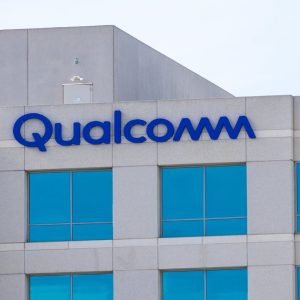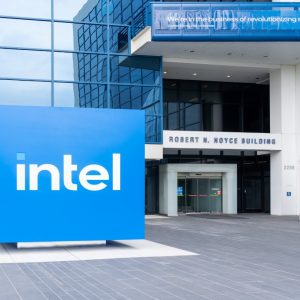Taligent Inc, the Apple Computer Inc-IBM Corp venture devoted to building an object-oriented operating system environment plans to deliver a complete 32-bit object-oriented operating system around the middle of 1995 and will be looking well beyond its masters’ horizons for custom. There will be a development environment and beta versions of the complete environment tailored for vertical markets running up to its release. The firm is also aiming to make available chunks of its technology for inclusion in other companies’ operating systems as the various components of its object environment are completed. It escaped general attention at the time, but Joseph Guglielmi, Taligent’s chairman and chief executive says that one of his first moves on joining the company was to create three quite separate divisions. The first of these concentrates on Taligent’s native implementation, now firmly based on a version of the Carnegie Mellon University Mach kernel, which IBM has slimmed down and turned into a true micro-kernel implementation. The second group handles development tools, while the third ‘complementary products’ division is looking to promote parts of the Taligent technology for adoption on existing hardware.
Too early
Its too early to say which bits these will be, says Guglielmi, but the most obvious choices, he suggests, are the big functional blocks such as graphics subsystems or the development environment. Both Apple and IBM will take Taligent work for incorporation in future versions of their existing offerings. The potential pitfall of this approach is that the Taligent add-ons could make the conventional offerings so attractive as to damage the acceptance of the native product itself. Guglielmi acknowledges this but says that if his company had ignored the market it would have given competitors free rein. This way, he says, when native Taligent, finally arrives in mid-1995 it will find an industry well stocked with Taligent-compliant tools and objects – and developers, claims Guglielmi, just love what they have seen so far. The Taligent system will use de facto protocols and support the Open Software Foundation Distributed Computing Environment, Sun Microsystems Inc’s remote procedure call and Network File System, Apple Events, AppleShare and the Object Management Group’s Common Object Request Broker Architecture mechanism for distributed computing. Taligent says its stuff does not conflict with Sun’s Distributed Objects Everywhere scheme, which is more focused on distributed networks, and the layered products will not require commitment to any specific microkernel – they will run on top of existing operating systems. IBM will be putting Taligent stuff up on OS/2 2.X and AIX microkernel-based systems from from next spring. Taligent kernels – as opposed to layered products – will act as the hardware-specific interface in place of current operating systems, and application programming interfaces such as the Apple Mac user interface and IBM’s Workplace Shell will become modules that run on top of these kernels.
By William Fellows
That Hewlett-Packard Co is thought to be lining up for a piece of Taligent, should come as no real surprise. Taligent was conceived as a stand-alone developer of technology: Hewlett-Packard has worked closely with IBM and Sun on objects and the deal for IBM to convert its Distributed Systems Object Model – DSOM – for Hewlett-Packard’s Precision Architecture RISC architecture is thought to have been the impetus for the Common Open Software Environment initiative. Indeed Hewlett-Packard and IBM are now thought to be working on much closer relationship Hewlett-Packard and IBM is a done deal, according to one insider. Meanwhile, IBM’s Personal Systems Products division which will have decamped to Austin, Texas, from its Somers, New York headquarters by the end of next quarter – is also working to convert its Distributed Systems Object Model object-enabling technology – which is front-ended by Hewlett-Packard Co’s Windows-based NewWave object interface – for Microsoft Corp Windows (by the t
hird quarter), Macintosh, Novell Inc and Sun environments in that order. Distributed Systems Object Model is a general-purpose mechanism for communicating between objects based on the OS/2 Workplace Shell, and is also up under AIX. The idea is to enable packaged objects to be accessed from anywhere on the network and from any programming language. It includes a distributed object application development environment, object services, inheritances, persistence, authorisation, verification and is also to include a Corba-compliant object dispatcher. IBM needs a set of binary compatible objects like these precisely because OS/2 and AIX do not share common binaries. IBM is developing a hardware-independent microkernel system based on the Carnegie Mellon University Mach 3 system that will take advantage of its own and Taligent object technologies. The idea is for operating system personalities such as OS/2, AIX and MS-DOS with Windows to run on top of a microkernel that will be available across a range of IBM machines, enabling the same applications to run under a variety of personalities. Mach 3 will handle all basic hardware functions. More complex services – from device driver interfaces up will be handled by the operating system personality on top. Mach runs to some 40,000 lines of code but can operate out of 512Kb RAM. Beta releases of AIX and OS/2 Mach microkernels are due in a few months and in the second half of the year respectively.
PowerOpen
IBM is reportedly trying to sell the Mach concept to the likes of Apple and Novell Inc. The PowerOpen environment it is developing out of AIX for PowerPC RISC will be compatible with the OSF/1 operating system, but will not be microkernel-based. IBM’s RS/6000 group, meanwhile, is pursuing a separate, non-microkernel version of AIX. Standards from groups such as the Object Management Group will ensure that various object technologies, including whatever Distributed Systems Object Model evolves into, Taligent, Sun’s Distributed Objects Everywhere and Hewlett-Packard Co’s Distributed Object Management Facility, share much common ground. Existing products, such as the Object Design Inc’s ObjectStore object database are already becoming widely adopted. Vendors simply haven’t had the time to go off and develop very proprietary offerings, yet. While there was much talk of objects at the Common Open Software Environment initiative roll-out, firms associated with the effort do not yet seem to have decided if or how this playing field can be levelled, or whether basic object functionality is to be used to gain competitive advantage. The question is how Sun, Taligent, IBM, Hewlett-Packard and others would be able to accommodate each others’ technology under such an umbrella.






